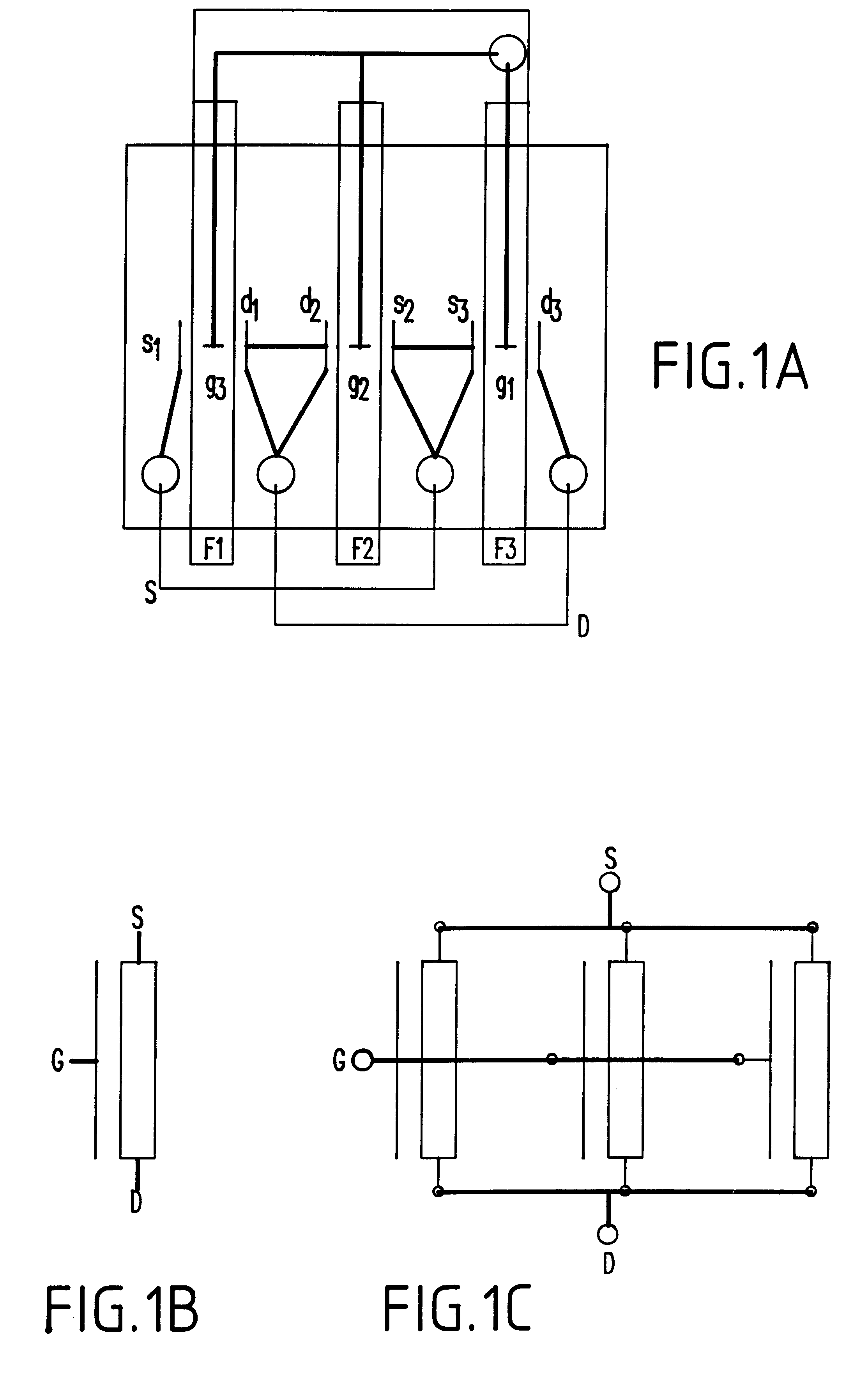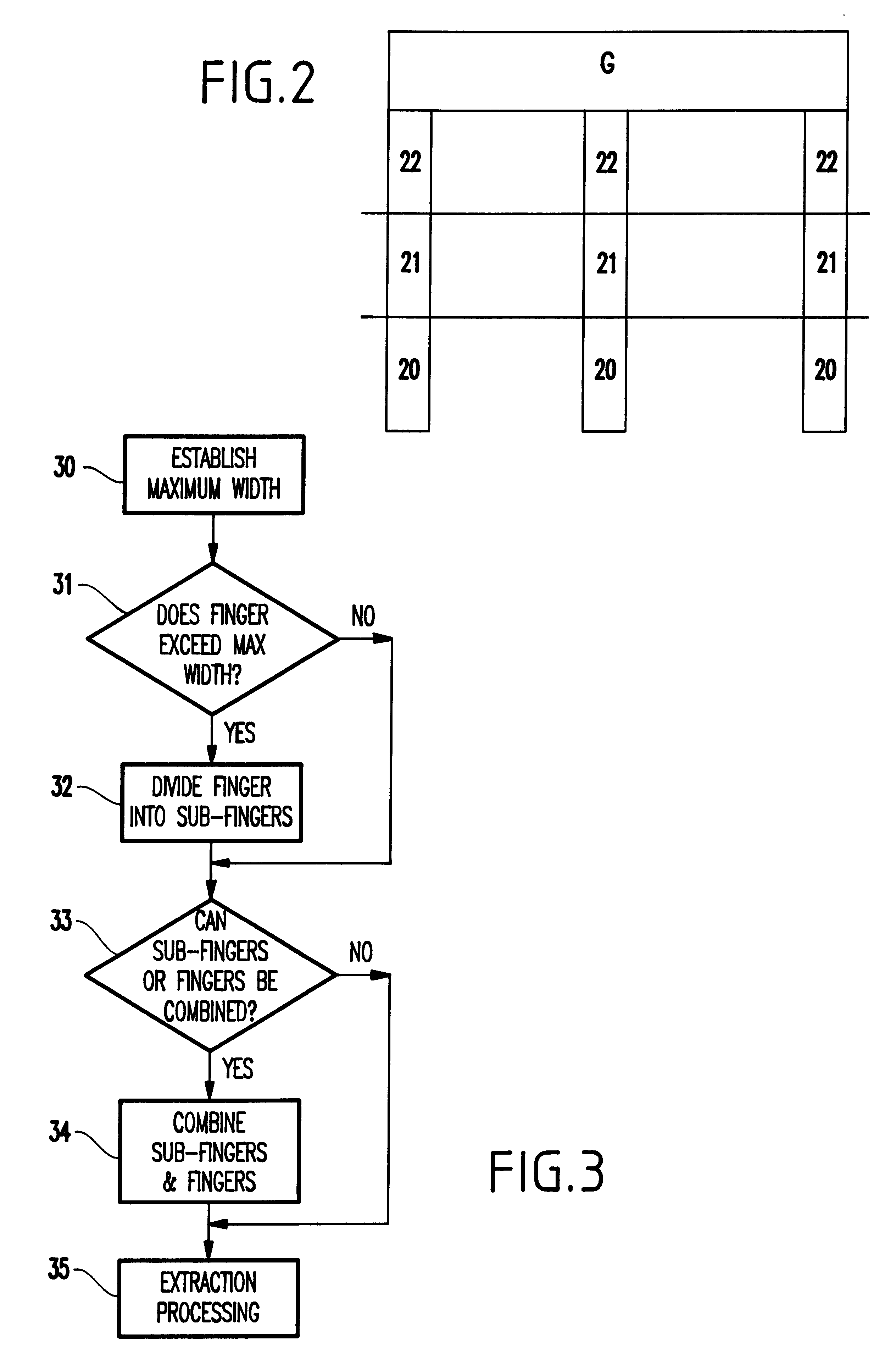Method of performing parasitic extraction for a multi-fingered transistor
a multi-finger transistor and parasitic extraction technology, applied in the field of integrated circuit devices, can solve the problems of inability to accurately measure the parasitic resistance of multi-finger transistor devices, less space occupied by multi-finger devices, and inability to produce error-free approximation results, etc., to achieve the effect of reducing the delay of the signal traveling along the finger and affecting the model accuracy
- Summary
- Abstract
- Description
- Claims
- Application Information
AI Technical Summary
Problems solved by technology
Method used
Image
Examples
Embodiment Construction
While conventional parasitic extraction tools rely on the user to consider (or usually ignore) device parasitic resistance in the device model, the invention supplies a method for extending the extraction and modeling capability of the extraction program to the resistors connected to the source, drain and gate of field effect transistors (FETs). With the invention the ports at which the resistors are connected to the device are situated in the middle of the gate for the gate contact. A short stripe is created under the sidewall of the gate poly to connect to source and drain resistors to the device. In this situation, each finger of a multi-finger FET device is connected with a different theoretical resistor network, which makes all fingers unique and separated in the netlist.
If the contact is only on one end of the device the voltage drop along the width of the device can require a break up of the device for accurate description of the device current.
Therefore, to achieve good accu...
PUM
 Login to View More
Login to View More Abstract
Description
Claims
Application Information
 Login to View More
Login to View More - R&D
- Intellectual Property
- Life Sciences
- Materials
- Tech Scout
- Unparalleled Data Quality
- Higher Quality Content
- 60% Fewer Hallucinations
Browse by: Latest US Patents, China's latest patents, Technical Efficacy Thesaurus, Application Domain, Technology Topic, Popular Technical Reports.
© 2025 PatSnap. All rights reserved.Legal|Privacy policy|Modern Slavery Act Transparency Statement|Sitemap|About US| Contact US: help@patsnap.com



